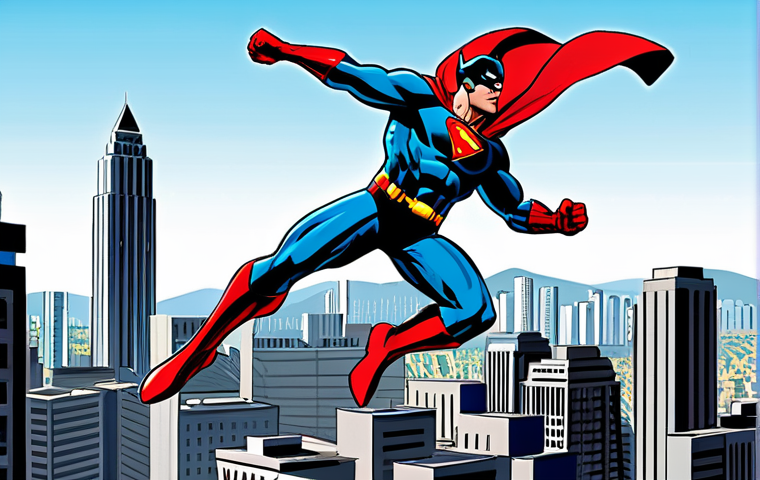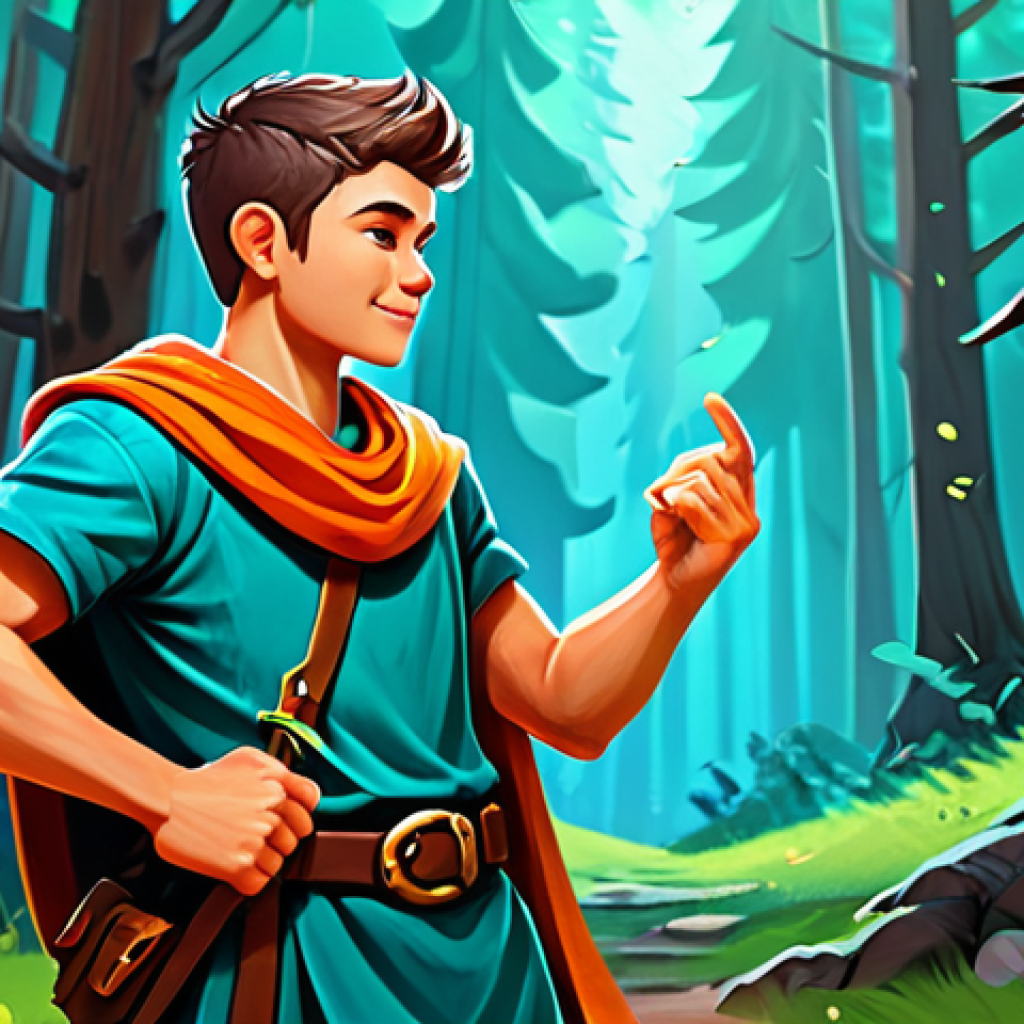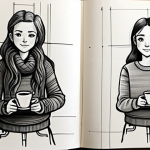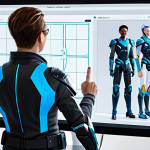So, you’re thinking about diving into the world of character design? Awesome! It’s a field that’s constantly evolving, influenced by everything from the latest video games to the surge in popularity of independent animated series.
Honestly, with the rise of AI tools, it’s never been easier to prototype ideas, but that also means standing out requires serious skill and a solid foundation.
Picking the right program can make all the difference. From my experience, it’s about finding a curriculum that balances technical skills with creative development.
Let’s delve into what each program has to offer!
Okay, here’s the blog post:
Diving Deep: Cultivating Your Artistic Foundation

Character design isn’t just about drawing a cool-looking character; it’s about storytelling, evoking emotion, and creating something that resonates with an audience.
That’s why a solid understanding of fundamental art principles is essential. When I was first starting, I jumped straight into digital painting, but I quickly realized I was missing crucial skills.
So I took a step back and focused on mastering anatomy, color theory, and composition. It made a world of difference! I started seeing my characters come to life in ways I hadn’t imagined.
Think of it like building a house – you need a strong foundation before you can start decorating.
Sharpening Your Skills Through Observational Studies
* Life Drawing: Attend life drawing sessions regularly. There’s no substitute for studying the human form in real life. It forces you to see shapes, proportions, and volumes accurately.
Plus, it’s a great way to loosen up your drawing style and improve your hand-eye coordination. Don’t be afraid to experiment with different mediums like charcoal, graphite, or even conte crayon.
Each one offers a unique way to capture the essence of the model. * Anatomy Studies: Grab an anatomy book (or five!) and start sketching. Understanding the underlying structure of the human body is crucial for creating believable characters, even stylized ones.
Pay attention to the muscles, bones, and joints. Knowing how they connect and move will make your characters feel more alive. Consider using online resources like Anatomy 360 for detailed references.
* Master Studies: Pick your favorite character designers and analyze their work. What makes their characters so appealing? How do they use line, color, and shape to convey personality?
Recreate their drawings to understand their techniques and thought processes. Don’t just copy blindly; try to deconstruct their work and figure out what makes it tick.
The Power of Visual Libraries and References
Creating a mental library of visual references is one of the most invaluable assets for any artist, especially in character design. Think of it as your personal treasure trove of inspiration, readily available whenever you need a spark of creativity.
I remember when I was working on a character for a steampunk-inspired game; I spent hours poring over images of Victorian-era clothing, machinery, and architecture.
That research not only informed the character’s design but also helped me create a more believable and immersive world.
Expanding Your Horizons Through Diverse Inspiration
* Building Your Visual Database: Collect images of everything that inspires you – fashion, architecture, nature, even everyday objects. Organize them into categories so you can easily find what you need.
Pinterest, Instagram, and even good old-fashioned magazines can be great sources of inspiration. Don’t limit yourself to character design; look at art from all disciplines.
* Incorporating Real-World Elements: Use real-world references to ground your characters in reality. Study how different fabrics drape, how light interacts with skin, and how people move and express themselves.
The more you observe the world around you, the more authentic your characters will become. * Storytelling Through Design: Every element of your character’s design should tell a story.
Their clothing, hairstyle, and accessories should all hint at their personality, background, and role in the world. Think about what message you want to convey and use visual cues to communicate it effectively.
Mastering the Digital Tools of the Trade
While traditional art skills are essential, character design today is largely a digital endeavor. Knowing your way around industry-standard software is a must.
When I first transitioned from traditional art to digital, it felt like learning a whole new language. But once I got the hang of the basics, I realized how much faster and more versatile digital tools are.
Now, I can’t imagine working without them! The key is to find the programs that suit your workflow and artistic style.
Procreate: The Mobile Powerhouse
* Intuitive Interface: Procreate’s user-friendly interface makes it easy to pick up, even for beginners. The natural feel of drawing on an iPad with the Apple Pencil makes it a joy to use.
* Powerful Features: Don’t let its simplicity fool you; Procreate is packed with features that rival desktop programs. It supports layers, custom brushes, and even animation.
* Portability: The ability to create high-quality artwork on the go is a huge advantage. Whether you’re sketching on the train or painting in a coffee shop, Procreate lets you unleash your creativity anywhere.
Adobe Photoshop: The Industry Standard
* Versatility: Photoshop is the go-to program for a wide range of digital art tasks, from painting and photo editing to graphic design and animation.
* Extensive Features: With its vast array of tools and features, Photoshop can handle virtually any character design task you throw at it. * Integration: Photoshop seamlessly integrates with other Adobe Creative Cloud apps, making it easy to incorporate your artwork into larger projects.
Clip Studio Paint: The Comic Artist’s Dream
* Specialized Tools: Clip Studio Paint is specifically designed for creating comics and manga. It offers features like perspective rulers, panel tools, and speech bubble tools that streamline the comic creation process.
* Brush Engine: The program’s brush engine is incredibly versatile, allowing you to create a wide range of effects, from realistic textures to stylized line art.
* Animation Support: Clip Studio Paint also supports animation, making it a great choice for creating animated comics or short films.
Perfecting the Art of Visual Storytelling
Character design isn’t just about creating visually appealing characters; it’s about telling stories through their appearance. Each character should have a unique personality and backstory that is reflected in their design.
I remember working on a project where I had to design a character who was a retired pirate captain. I thought about his life at sea, his battles, and his personality.
I incorporated elements like a weathered eye patch, a tattered coat, and a confident swagger into his design. The result was a character that felt both believable and compelling.
The Significance of Silhouette and Shape Language
* Instantly Recognizable Forms: A strong silhouette is essential for creating memorable characters. Can you recognize the character even when you only see their outline?
Think of iconic characters like Mickey Mouse or Darth Vader; their silhouettes are instantly recognizable. * Communicating Personality Through Shape: Different shapes can evoke different emotions and associations.
Round shapes tend to feel friendly and approachable, while sharp, angular shapes can convey aggression or danger. Use shape language to reinforce your character’s personality.
* Creating Visual Interest: Varying the shapes and proportions of your character can make them more visually interesting. Experiment with different silhouettes and see how they affect the overall design.
Harnessing the Power of Color and Costume
* Evoking Mood and Emotion: Colors have a powerful effect on our emotions. Use color to create a specific mood or atmosphere. Warm colors like red and orange can evoke feelings of excitement and energy, while cool colors like blue and green can create a sense of calm and serenity.
* Revealing Character Through Clothing: A character’s clothing can tell us a lot about their personality, background, and social status. Consider the cut, color, and fabric of their garments.
Are they wearing expensive, tailored clothes or simple, functional attire? * Accessorizing for Impact: Accessories can add extra depth and detail to your character’s design.
Think about what items your character might carry or wear. A warrior might have a sword and shield, while a scholar might have a book and glasses.
Understanding the Fundamentals of Animation Principles
If you’re planning on creating characters for animation, it’s essential to understand the basic principles of animation. These principles, developed by Disney animators, are the foundation of all good animation.
When I first started animating, I tried to skip these principles, thinking I could just wing it. But I quickly realized that my animations looked stiff and unnatural.
Once I started applying the principles, my animations came to life in ways I hadn’t imagined.
Squashing and Stretching for Dynamic Poses
* Creating a Sense of Weight: Squashing and stretching can be used to create a sense of weight and volume in your characters. When a character lands on the ground, their body should squash slightly, and when they jump, their body should stretch.
* Exaggerating Movement: Exaggerating the squashing and stretching can make your animations more dynamic and entertaining. Just be careful not to overdo it, or your characters will look unnatural.
* Maintaining Volume: When squashing and stretching, it’s important to maintain the overall volume of your character. The character shouldn’t appear to get bigger or smaller during the animation.
Timing and Spacing for Believable Motion
* Creating a Sense of Speed: The spacing between frames determines the speed of the animation. Closer spacing creates slower movement, while wider spacing creates faster movement.
* Adding Weight and Impact: Varying the timing and spacing can add weight and impact to your animations. For example, you can use slow-ins and slow-outs to create a sense of anticipation and release.
* Creating Rhythm and Flow: Timing and spacing can also be used to create rhythm and flow in your animations. Experiment with different timings to find what works best for your character’s personality and movement style.
Building Your Online Presence and Portfolio
In today’s digital world, having a strong online presence is crucial for any artist. Your online portfolio is your digital storefront, where you can showcase your work and attract potential clients or employers.
When I first started freelancing, I didn’t have a website or online portfolio. I relied solely on word-of-mouth and referrals. But I quickly realized that I was missing out on a lot of opportunities.
Once I created a professional website and started actively promoting my work online, my career took off.
Showcasing Your Best Work Strategically
* Curating Your Portfolio: Only include your best work in your portfolio. It’s better to have a small, focused portfolio of high-quality pieces than a large, unfocused portfolio of mediocre work.
* Tailoring Your Portfolio: Tailor your portfolio to the specific type of work you’re seeking. If you want to work in animation, focus on showcasing your animation skills.
If you want to work in video games, focus on showcasing your character design skills for games. * Presenting Your Work Professionally: Make sure your portfolio is well-designed and easy to navigate.
Use high-quality images and write clear, concise descriptions of your work.
Leveraging Social Media Platforms Effectively
* Building a Following: Use social media platforms like Instagram, Twitter, and ArtStation to share your work and connect with other artists. * Engaging with Your Audience: Interact with your followers, respond to comments, and participate in online discussions.
* Using Hashtags: Use relevant hashtags to help people find your work.
Networking and Collaboration Opportunities
* Attending Industry Events: Attend industry events like conferences, workshops, and exhibitions. These events are a great way to meet other artists, learn new skills, and network with potential clients or employers.
* Joining Online Communities: Join online communities like forums, groups, and Discord servers. These communities are a great way to connect with other artists, share your work, and get feedback.
* Collaborating with Other Artists: Collaborate with other artists on projects. Collaboration is a great way to learn new skills, expand your network, and create something amazing together.
Monetizing Your Character Design Skills
Turning your passion for character design into a sustainable career is the ultimate goal for many artists. While it takes hard work and dedication, there are many ways to monetize your skills.
When I first started out, I struggled to find clients and earn a decent income. But over time, I learned how to market myself effectively and find the right opportunities.
Now, I’m able to support myself entirely through my character design work.
Exploring Freelancing Opportunities
* Building a Client Base: Freelancing allows you to work on a variety of projects for different clients. * Setting Your Own Rates: You can set your own rates and work on your own schedule.
* Flexibility and Independence: Freelancing offers flexibility and independence.
Selling Character Design Assets
* Creating Brushes and Templates: Sell your custom brushes, templates, and other digital assets to other artists. * Designing Character Packs: Create character packs for use in games, animations, or illustrations.
* Selling Digital Downloads: Sell digital downloads of your artwork, such as wallpapers, prints, or coloring pages.
Creating and Selling Online Courses
* Sharing Your Knowledge: Share your knowledge and skills by creating and selling online courses. * Reaching a Global Audience: You can reach a global audience and earn passive income.
* Building Authority: Creating online courses can help you build authority in your field.
| Aspect | Procreate | Adobe Photoshop | Clip Studio Paint |
|---|---|---|---|
| Interface | Intuitive, user-friendly | Complex, industry standard | Comic/Manga focused |
| Best For | Mobile sketching, painting | Photo editing, general design | Comic creation, illustration |
| Price | One-time purchase | Subscription-based | One-time purchase/Subscription |
| Learning Curve | Easy to learn | Steep learning curve | Moderate learning curve |
Character design is a journey, not a destination. Embrace the challenges, celebrate your successes, and never stop learning. The most important thing is to have fun and let your creativity shine!
Now go out there and create something amazing. The world needs your unique characters!
Wrapping Up
So, there you have it – a comprehensive guide to leveling up your character design skills! Remember that practice makes perfect, so don’t be afraid to experiment, make mistakes, and learn from them. Every artist starts somewhere, and with dedication and perseverance, you can achieve your character design goals.
Whether you’re dreaming of working for a major animation studio or creating your own indie game, the skills you’ve learned here will serve you well. Keep honing your craft, building your portfolio, and connecting with other artists. The character design community is a supportive and welcoming place, so don’t be afraid to reach out and ask for help.
The journey of a character designer is filled with challenges, but it’s also incredibly rewarding. There’s nothing quite like seeing your characters come to life on screen or in print. With the right tools, skills, and mindset, you can create characters that resonate with audiences and leave a lasting impact on the world.
Handy Tips and Tricks
1. Color Palette Generators: Use online tools like Adobe Color or Coolors to create harmonious color palettes for your characters. They can help you find complementary colors and avoid clashing combinations.
2. Gesture Drawing: Practice gesture drawing to capture the essence of a pose quickly. Focus on capturing the flow of movement rather than perfect anatomy.
3. Reference Photoshoots: If you need specific reference photos for your characters, don’t be afraid to stage your own photoshoot. Ask a friend to model for you or use yourself as the subject.
4. Online Communities: Join online communities like DeviantArt, ArtStation, and Reddit’s r/characterdesign to share your work, get feedback, and connect with other artists.
5. Skillshare and Udemy: Take online courses on Skillshare or Udemy to learn new techniques and improve your skills. There are courses available on everything from anatomy to digital painting to character design.
Key Takeaways
* Foundational art skills are crucial; don’t skip anatomy, color theory, and composition.
* Build a visual library from diverse sources to inspire creativity.
* Master digital tools like Procreate, Photoshop, and Clip Studio Paint.
* Tell stories through character design, focusing on silhouette, shape language, color, and costume.
* Understand animation principles for dynamic poses and believable motion.
* Build a strong online presence and portfolio to showcase your work.
* Explore freelancing, asset sales, and online courses to monetize your skills.
Frequently Asked Questions (FAQ) 📖
Q: I’m a complete beginner.
A: re these programs going to throw me into the deep end with a bunch of jargon and assume I already know how to draw? A1: That’s a really valid concern!
Nobody wants to feel completely lost on day one. From what I’ve seen, most reputable programs understand that students come from different backgrounds.
They usually start with the fundamentals, focusing on basic drawing skills like anatomy, perspective, and color theory. Think of it like building a house – you need a solid foundation before you can start adding the fancy decorations.
They’ll introduce software gradually, so you’re not overwhelmed with technical stuff right away. Look for programs that specifically mention “beginner-friendly” or “foundational courses.” It’s a good sign they’ll take the time to bring everyone up to speed.
Plus, don’t be afraid to ask questions! Seriously, that’s what instructors are there for.
Q: Okay, but what if I’m not a complete beginner? I’ve been doodling for years and even done some freelance work. Will I just be bored stiff going over stuff I already know?
A: Definitely don’t want you twiddling your thumbs! Most programs offer pathways for more experienced students. Some might have advanced placement options, where you can skip introductory courses based on your portfolio.
Others structure their curriculum in a way that allows you to move at your own pace or choose electives that align with your specific interests, like creature design or character rigging.
It’s worth checking if they have mentorship programs or opportunities to work on real-world projects. That’s where you can really hone your skills and build your professional network.
Think of it as leveling up – you want to be challenged, not bored!
Q: So, aside from the technical skills, how do these programs help you actually develop your own unique style? I don’t want to just churn out cookie-cutter characters that look like everyone else’s.
A: That’s the million-dollar question, isn’t it? Developing your own style is super important. While the programs will teach you the fundamentals and the technical aspects, the best ones also encourage experimentation and self-expression.
Look for programs that offer workshops on visual storytelling, character psychology, and world-building. These will help you dig deeper and create characters that are not only visually appealing but also have depth and personality.
Critiques and feedback sessions with instructors and peers are also crucial. They can help you identify your strengths and weaknesses and push you to explore new directions.
Ultimately, it’s about finding your voice and letting your personality shine through in your designs. Remember, your unique experiences and perspectives are what make your style truly your own.
📚 References
Wikipedia Encyclopedia






